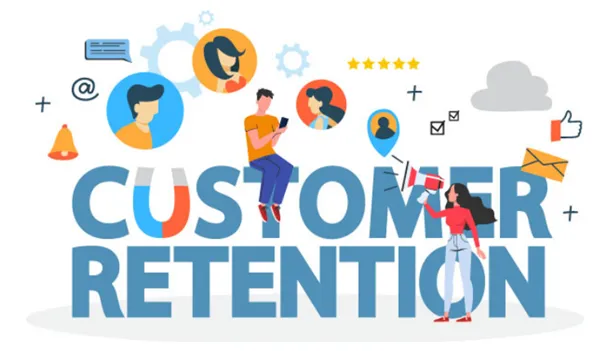The subscription and billing management market has seen a lot of changes in the last decade. The most significant change came with the widespread cloud adoption, which brought forth new business models for application developers. With the advent of mobile, businesses saw exponential growth in subscriptions for web applications and services, increasing demand for tools to better manage these processes.
Currently, the subscription and billing management market is in a healthy state. Many vendors compete in the space with different technologies built around customer retention via flexible billing. It is no surprise that developing an effective strategy to acquire new customers while retaining existing ones has become highly critical for businesses.
While there has been a handful of noteworthy acquisitions within the past year, this market is still very fragmented, with small vendors leading the way. In addition, new entrants are always welcome as long as they can offer a different business model or innovative technology to make a difference in the space.
In this article, we will take an in-depth look at key trends and developments that have shaped the subscription & billing management market-
Major Challenges faced by the subscription & billing management market
In its current state, two key challenges can be identified in the subscription & billing management market:
- The lack of pre-built integrations from billing providers (e.g., PayPal, Braintree, or Stripe), providing subscription management capabilities; and
- The lack of personalization in helping customers acquire new subscriptions at the right time and price. These challenges will continue to impact revenue results for companies in the industry today if not adequately addressed.
However, vendors can overcome these challenges by constantly innovating in their product offerings and carefully selecting acquisition strategies to help expand their customer base.
Market Analysis
According to MarketsandMarkets, the business of subscription management services will almost double over the next several years. The subscription and billing management sector is expected to grow from $4 billion in 2020 to $7.8 billion in 2025, with a compound annual growth rate of 14%.
—————————————————————————————————————————————————————————–
Also Read: 10 Benefits of Best Online Subscription billing Software
—————————————————————————————————————————————————————————–
Key trends of the Subscription & Billing Management Market
After reviewing the growth of the subscription & billing management market, you must be wondering-
What’s driving that growth?
A number of the trends that emerged or accelerated due to the COVID-19 epidemic and subsequent economic instability are intended to guarantee relevance through rapid change and keep consumers returning no matter what.
Here are some of the trends-
1. The rapid development of subscription models
In the subscription business, media and entertainment are set to see the most significant growth, a pattern that was already evident before the pandemic. When movie theatres closed in April and audiences searched for alternative forms of entertainment as studios sought new methods to distribute films, demand started to grow. The media and entertainment sector now accounts for a large portion of the subscription model demand.
Of course, this isn’t the first industry in which subscription models are gaining traction. Consumers doubled down on their appreciation for the convenience and safety of subscription services to supply everything from groceries and other necessities to clothing, hobbies, and more while in-person retail closed down. Many organizations are successfully reaching customers through these recurring billing models.
2. Customer requirement for flexibility
Customers’ growing demand for flexibility in purchasing items and services has also exploded. As the epidemic’s economic repercussions wreaked havoc on many families’ finances, it became more critical than ever for customers to be able to buy — and pay for — only what they needed and would use.
Customers seeking cost savings flocked to product-as-a-service arrangements, which bolstered subscription models. But it also increased the desire for pay-per-use and other usage-based alternatives to basic subscriptions. Customers can customize their purchases to get only what they need when they need it under these systems.
Customers appreciate the adaptability; for businesses, the decreased initial investment encourages consumers to stay and try new things, even during change.
Is there any business billing software that offers flexibility to customers? Yes.
You can request a free demo of recurring billing software here-
3. Market needs agility
In today’s changing world, every company must be flexible and pivot on a dime if they want to thrive. Manual processes, spreadsheets, and antiquated billing systems – which were previously an embarrassment – are now an actual burden due to their propensity for producing costly mistakes and delays.
On the other hand, subscription billing and management systems allow organizations to automate their most time-consuming procedures and set up new business models quickly and simply, keeping up with whatever the market throws at them.
—————————————————————————————————————————————————————————–
Also Read: Things to Look Up Before Purchasing A Billing Software for Small Business
—————————————————————————————————————————————————————————–
4. Data security
The debate about data privacy is not new. It has grown in intensity as companies store larger quantities of consumer information and use it in more ways than ever before. Increasing customer pressure to keep their data private — and rising regulations intended to achieve the same goal — have pushed businesses to comply with ethically and legally required best practices for data.
Individual businesses ultimately bear the burden of responsibility, but subscription and billing management systems can provide built-in measures and characteristics to lighten the burden.
For many organizations, efficient billing management is a foreign world.
However, as these trends grow more popular, the appropriate platform will no longer be a convenience — it will become a requirement for firms that wish to retain clients and achieve growth targets.
5. Customer retention
Reducing churn and keeping customers for the long term is more crucial than ever. While flexible business models are beneficial, ensuring a smooth billing experience with every customer transaction. It also means timely invoices that are simple to interpret, clearly state each charge for clients, and make payment simple. It’s critical to the client experience to have a clear and understandable billing procedure.
However, businesses can improve customer satisfaction and repeat purchases by lowering friction and minimizing disputes. Customers will be happy with their service and eager to buy from the same company again if they can do so safely. Once again, outdated processes stifle customer retention efforts, and successful firms seek subscription billing and management software to automate the quote-to-cash procedure.
Closing Thoughts
The Subscription & Billing management market has grown quickly over the past few years. With more and more industries going to a subscription model, businesses need to have an effective strategy for managing their subscriptions. The key trends we have covered show that flexibility, agility, data security, and customer retention impact how customers make decisions about which company they choose for this type of service.
You might be thinking-
Which can be the best software tool for subscription billing management?
We invite you to take a virtual tour now to discover more about Invoicera and how it can help your organization succeed. If you like what you see, sign up to speak with their experts about why Invoicera is the best subscription billing software for your business.
Well!! That’s it for today. Which one of these trends do you feel would most benefit your organization? Please tell us in the comment section-
Thanks for reading!!


















